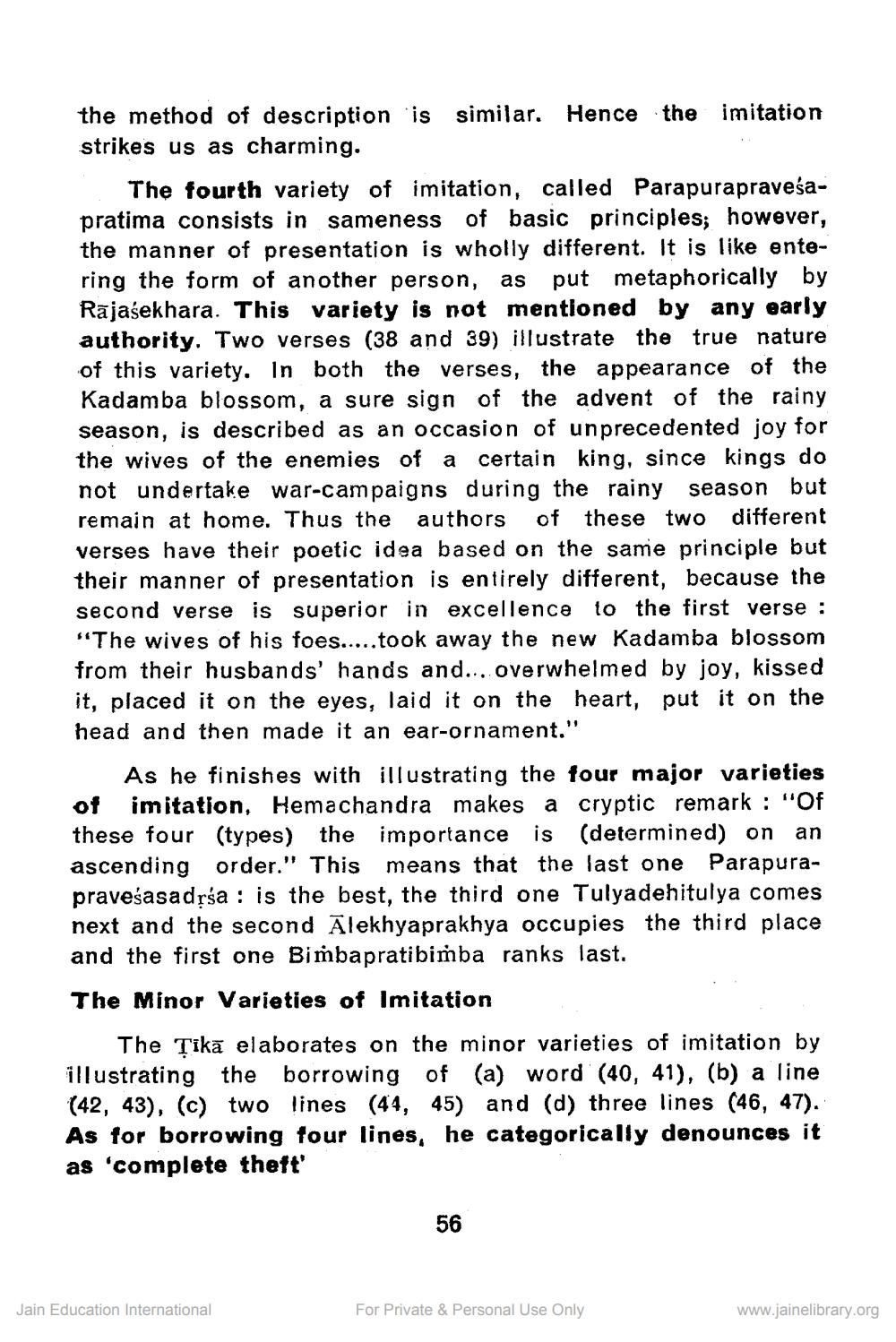________________
the method of description is similar. Hence the imitation strikes us as charming.
The fourth variety of imitation, called Parapurapraveśapratima consists in sameness of basic principles; however, the manner of presentation is wholly different. It is like entering the form of another person, as put metaphorically by Rājasekhara. This variety is not mentioned by any early authority. Two verses (38 and 39) illustrate the true nature of this variety. In both the verses, the appearance of the Kadamba blossom, a sure sign of the advent of the rainy season, is described as an occasion of unprecedented joy for the wives of the enemies of a certain king, since kings do not undertake war-campaigns during the rainy season but remain at home. Thus the authors of these two different verses have their poetic idea based on the same principle but their manner of presentation is entirely different, because the second verse is superior in excellence to the first verse : "The wives of his foes.....took away the new Kadamba blossom from their husbands' hands and... overwhelmed by joy, kissed it, placed it on the eyes, laid it on the heart, put it on the head and then made it an ear-ornament."
As he finishes with illustrating the four major varieties of imitation, Hemachandra makes a cryptic remark : "Of these four (types) the importance is (determined) on an ascending order." This means that the last one Parapurapraveśasadựsa : is the best, the third one Tulyadehitulya comes next and the second Alekhyaprakhya occupies the third place and the first one Bimbapratibimba ranks last. The Minor Varieties of Imitation
The Țikā elaborates on the minor varieties of imitation by illustrating the borrowing of (a) word (40, 41), (b) a line (42, 43), (c) two lines (44, 45) and (d) three lines (46, 47). As for borrowing four lines, he categorically denounces it as 'complete theft'
56
Jain Education International
For Private & Personal Use Only
www.jainelibrary.org




